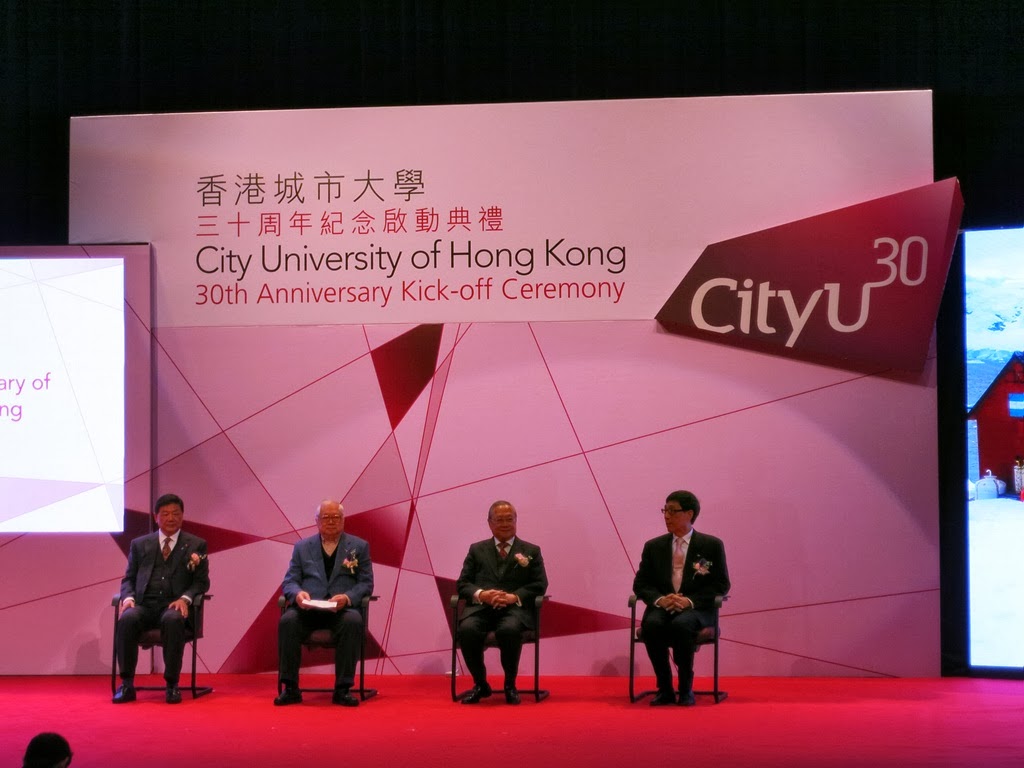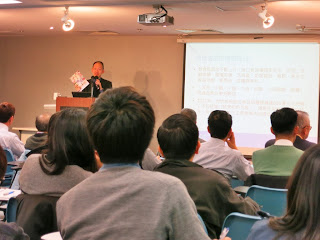Firstly, Dr. Mark Lee introduced the content of seminar included "Serving Customer vs Serving Managers", "A Sales Management System (SMS)", "Outcome Control (OC) System", "Behavior Control (BC) System", "Key Components of a SMS", "Challenge of System Inconsistency", "Inconsistency Check-up Tool", "Implementation Challenges at the Company Level" and "Group Discussion".
Serving Customer vs Serving Managers
Dr. Lee asked Who is My Real Boss? If Customer is King, salespeople would put the customer first. If Manager is King, salespeople would put their district or regional manager first. Confusion could be a sign indicating that your company's sales force controls were in conflict with one another (Internal Struggling!).
Then Dr. Lee quoted Prof. Erin Anderson that "Strategy suffers and execution fails when companies don't help salespeople manage the tension between serving the customer and serving the company. A holistic sales force control system can improve alignment and results."
A Sales Management System (SMS)
SMS consisted the rules that governed the way a company to train, monitor, supervise, motivate and evaluate their salespeople. SMS demonstrated what management expects from its sales team. SMS is like a compass to guide the decision making.
There were three key components of SMS included Intervention, Compensation and Performance Criteria.
1. The degree of management's intervention in daily sales activities.
2. The types of compensation offered to salespeople.
3. The number and types of criteria managers use to evaluate salespeople performance.
Outcome Control (OC) System and Behavior Control (BC) System
There are two extremes of SMS which separate as Outcome Control (OC) System and Behavior Control (BC) System. Their goals and criteria are different.
What situations to choose OC System? It should be included:
1. Customers need information.
2. The sale is open.
3. Customers trust the salesperson.
4. There are many ways to close the deal
1. Customers need information.
2. The sale is open.
3. Customers trust the salesperson.
4. There are many ways to close the deal
What situations to choose BC System? It should be included:
1. Your salespeople lack experience
2. You need to protect your brand (marketing)
3. You have high non-sales priorities (e.g. Cash flow and inventory turn)
4. It is hard to assign sales credit (e.g. Apple Store)
System Components of a Sales Management System
The following table showed Six System Components in SMS on OC system and BC system respectively.
Challenge of System Inconsistency
Dr. Lee said many companies function quite well somewhere in the middle between OC and BC system. OC system preferred by Successful Salespeople but BC system preferred by Managers. There would be self-contradictory for doing Both at the same time. If a company used many criteria to evaluate its salespeople but it also offered minimal or no monitoring and coaching that was a problem of Inconsistency.
Inconsistency Check-up Tool
Using the Six System Components in SMS as self-check tool to rate each component near OC or BC. If it is a straight line, meaning that you system is well balanced. If the line zigzags, indicating inconsistency and you need to take a closer look at how your sales function works.
Three Common Patterns of System Inconsistency was discussed. They were the ever-present manager, Sublime neglect and the black hole.
1. Your salespeople lack experience
2. You need to protect your brand (marketing)
3. You have high non-sales priorities (e.g. Cash flow and inventory turn)
4. It is hard to assign sales credit (e.g. Apple Store)
System Components of a Sales Management System
The following table showed Six System Components in SMS on OC system and BC system respectively.
Challenge of System Inconsistency
Dr. Lee said many companies function quite well somewhere in the middle between OC and BC system. OC system preferred by Successful Salespeople but BC system preferred by Managers. There would be self-contradictory for doing Both at the same time. If a company used many criteria to evaluate its salespeople but it also offered minimal or no monitoring and coaching that was a problem of Inconsistency.
Inconsistency Check-up Tool
Using the Six System Components in SMS as self-check tool to rate each component near OC or BC. If it is a straight line, meaning that you system is well balanced. If the line zigzags, indicating inconsistency and you need to take a closer look at how your sales function works.
Three Common Patterns of System Inconsistency was discussed. They were the ever-present manager, Sublime neglect and the black hole.
1. The ever-present manager
It is the most frequent type of mismatch. A company generally used OC system but Interventionist Managers focus on results but evaluation using BC system. They frequent monitoring their salespeople but no coaching. Therefore, salespeople resisted management's interference.
2. Sublime neglect
A company used BC system but they didn't provide salespeople with sufficient coaching from and contact with mangement. Therefore, they lacked of direction.
It is the most frequent type of mismatch. A company generally used OC system but Interventionist Managers focus on results but evaluation using BC system. They frequent monitoring their salespeople but no coaching. Therefore, salespeople resisted management's interference.
2. Sublime neglect
A company used BC system but they didn't provide salespeople with sufficient coaching from and contact with mangement. Therefore, they lacked of direction.
3. The black hole
It is OC system fundamentally but with opague evaluation methods. Salespeople feel like the company is customer and result oriented but those individual performance evaluations is a mystery. Under this culture, salespeople consider arbitrary and political, and then become cynical.
Finally, Dr. Lee said consistent system with the right location that some where in the middle was ideal. One of challenges of BC system was too many overhead.
Before the group discussion, Dr. Lee used NLP method to give us an exercise to choose the most common inconsistency and the least common inconsistency pattern of three patterns of system inconsistency.
Reference:
The Centre for Logistics Technologies and Supply Chain Optimization, CUHK - http://www.logitsco.cuhk.edu.hk/
HKSTP - www.hkstp.org
It is OC system fundamentally but with opague evaluation methods. Salespeople feel like the company is customer and result oriented but those individual performance evaluations is a mystery. Under this culture, salespeople consider arbitrary and political, and then become cynical.
Finally, Dr. Lee said consistent system with the right location that some where in the middle was ideal. One of challenges of BC system was too many overhead.
Before the group discussion, Dr. Lee used NLP method to give us an exercise to choose the most common inconsistency and the least common inconsistency pattern of three patterns of system inconsistency.
Reference:
The Centre for Logistics Technologies and Supply Chain Optimization, CUHK - http://www.logitsco.cuhk.edu.hk/
HKSTP - www.hkstp.org





























































